Steel Products Prices North America
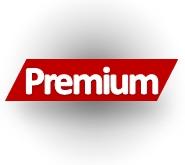
Raw Materials Prices: Iron Ore, Coking Coal, Pig Iron, Scrap, Zinc
Written by Brett Linton
May 22, 2020
The COVID-19 pandemic has resulted in weaker global demand for steelmaking raw materials. However, the cost of producing and delivering many of these commodities has also fallen. Strong demand in China is helping to buoy prices for iron ore and other materials.
Table 1 summarizes the price changes through May 21 of the five materials considered in this analysis. It reports the month/month, three months/three months and year/year changes on a percentage basis.
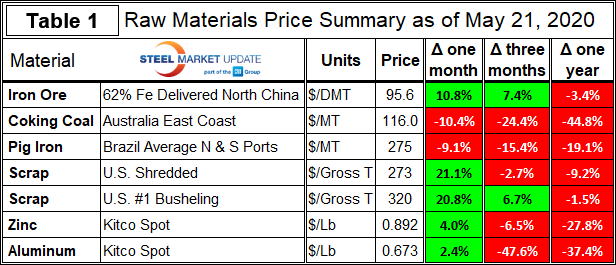
Iron Ore
The Chinese import price of 62% Fe content iron ore fines bounced between $82-$97 per dry metric ton in the first quarter, now up to $95.6 as of May 20, nearing the first quarter’s high of $96.7. Figure 1 shows the price of 62% Fe delivered North China since January 2018.
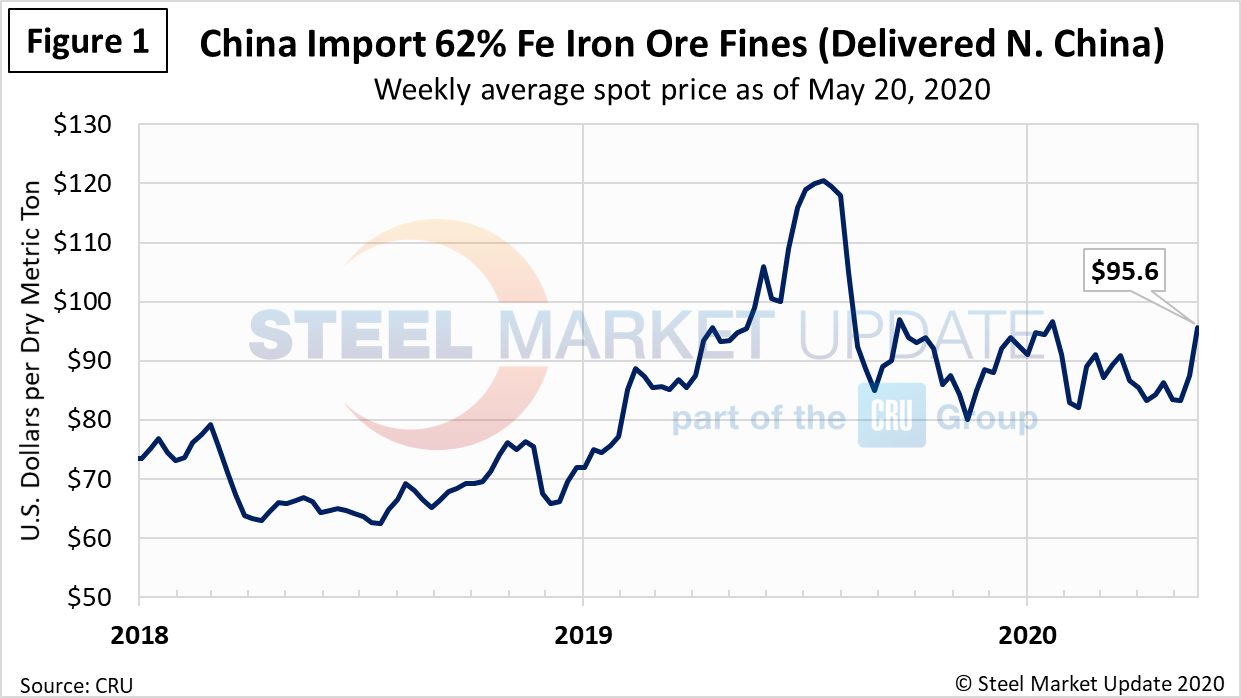
Coking Coal
The price of premium low volatile coking coal FOB east coast of Australia rose to $116.0/dmt as of May 20, a minor change of pace from April’s sharp decline (Figure 2). Recent coking coal prices are at their lowest levels seen in our limited history.
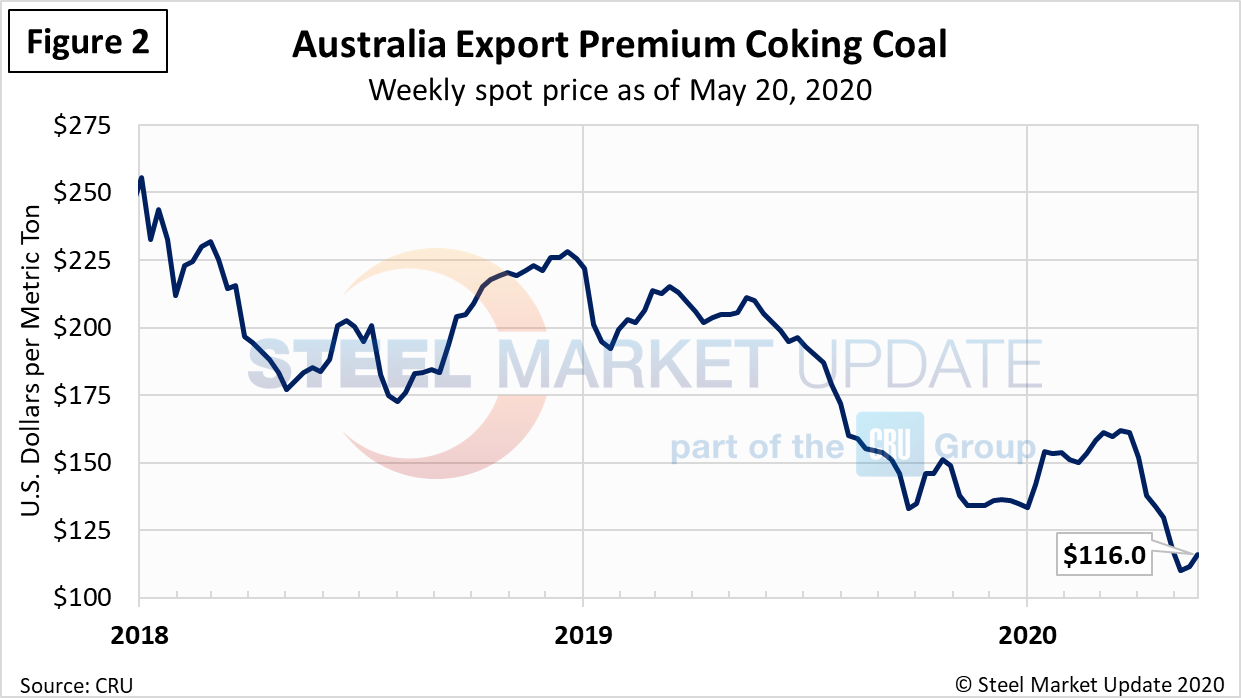
Pig Iron
Most of the pig iron imported to the U.S. currently comes from Russia, Ukraine and Brazil. This report summarizes prices out of Brazil and averages the FOB value from the north and south ports. The latest data through May 20 shows an average pig iron price of $275 per metric ton, down from $325 in February and March. Pig iron prices have declined erratically since hitting a peak of $400 per ton in mid-2018 (Figure 3).
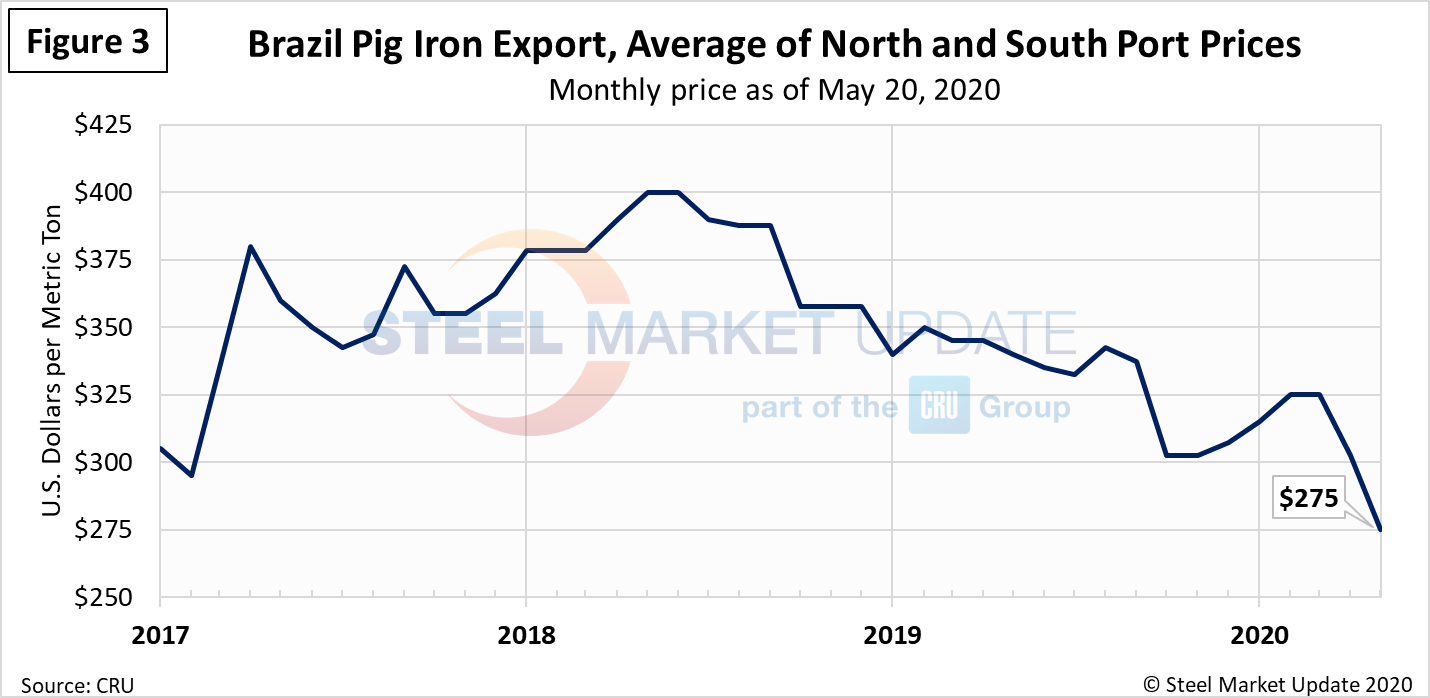
Scrap
Hot rolled steel prices fluctuate up and down with the price the mills must pay for their raw materials. Changes in the relationship between scrap and iron ore prices offer insights into the competitiveness of integrated mills, whose primary feedstock is iron ore, versus the minimills, whose primary feedstock is scrap. Prices for both prime/busheling and obsolete/shredded scrap have moved up in recent weeks as supplies have tightened due to the coronavirus shutdowns and related disruptions to scrap collection. Figure 4 shows the relationship between shredded and busheling, both priced in dollars per gross ton in the Great Lakes region.
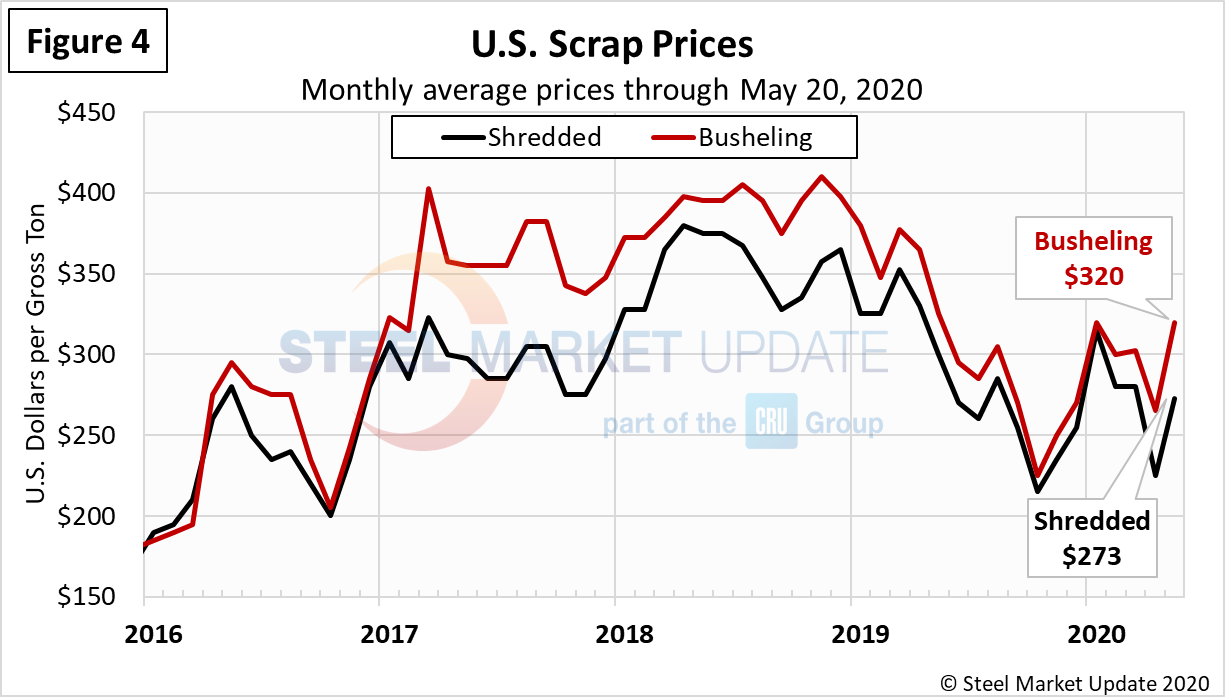
Figure 5 shows the recent spread between the price of iron ore, at $95.6 per dry metric ton, and shredded scrap at $273 per gross ton. Both ore and scrap have moved higher in recent weeks, lending some support to finished steel prices.
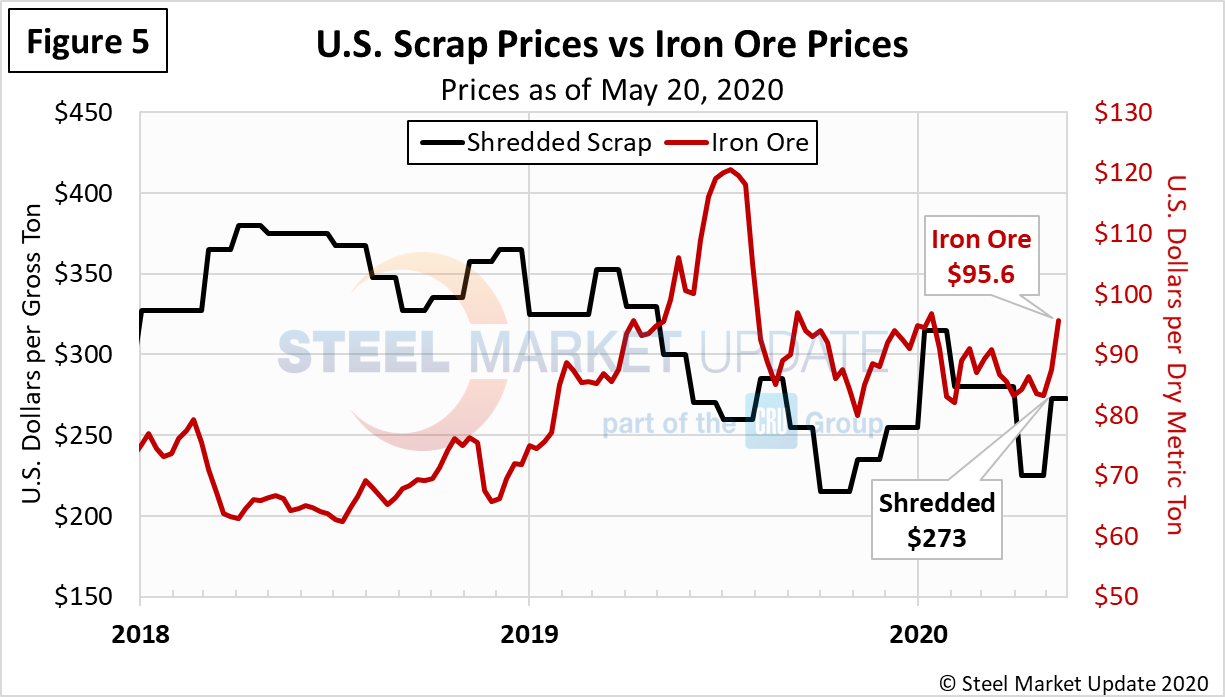
To compare the two, Steel Market Update divides the shredded scrap price by the iron ore price to calculate a ratio (Figure 6). A high ratio favors the integrated/BF producers, a lower ratio favors the minimill/EAF producers. As the 2.85 ratio shows, the recent increases in the price of ore have outpaced the increases in the price of scrap, adding slightly to the minimills’ competitive cost advantage.
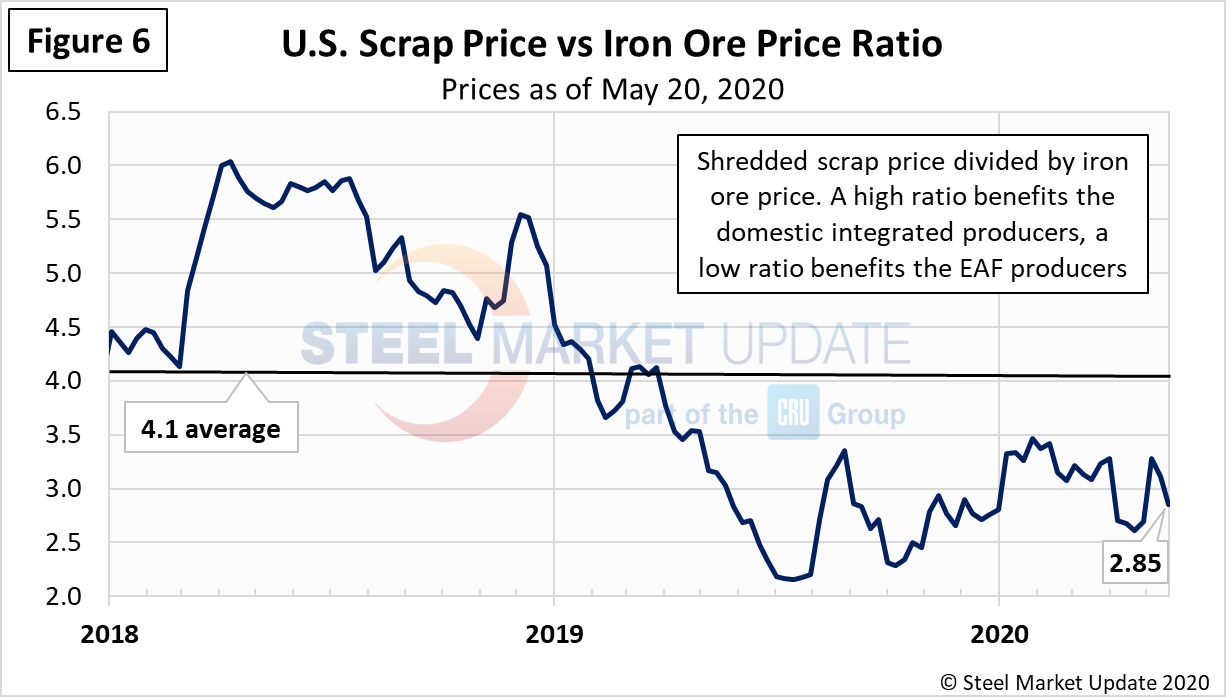
Figure 7 shows how the price of hot rolled steel tracks with the price of shredded scrap. Shred rose by approximately $50 from April to May, while hot rolled prices were flat over that same one month period.
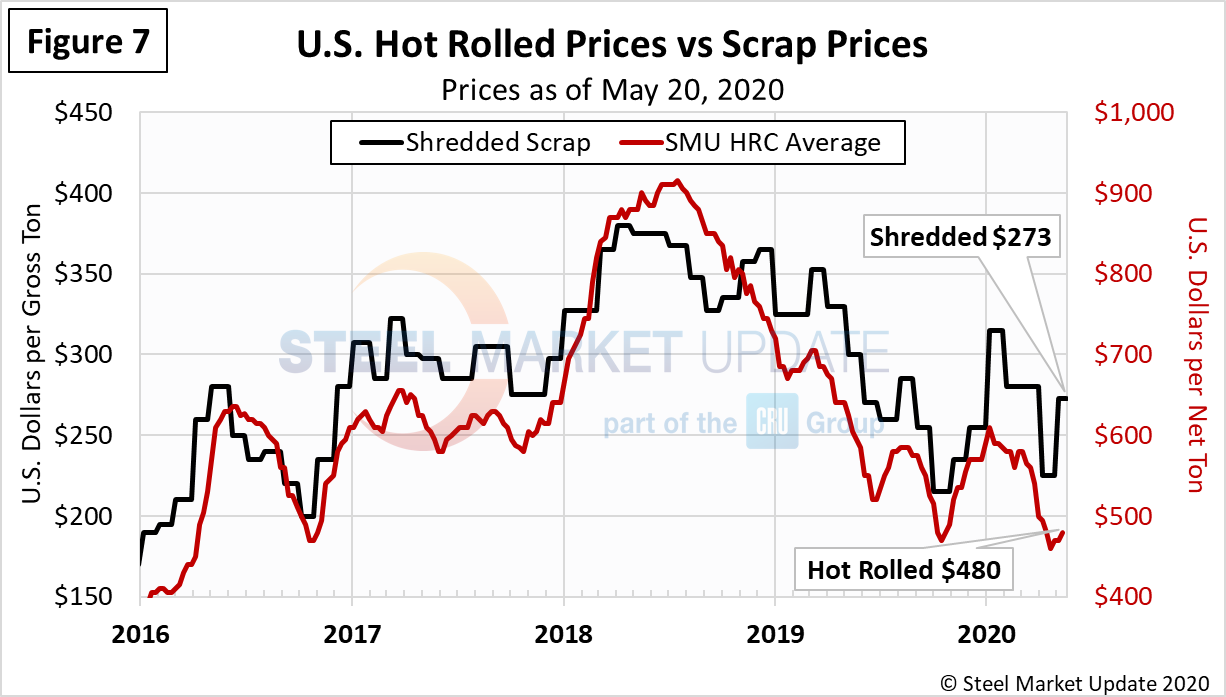
Zinc
Zinc, used to make galvanized and other products, declined in price for much of the first quarter but started rebounding in the second quarter (Figure 8). The LME cash price per pound of zinc as of May 21 was $0.8918, up over the mid-March low of $0.8239 but down from the mid-January peak of $1.1186. The price of zinc factors into the coating extras charged by the mills for galvanized products. Aluminum prices, which factor into the price of Galvalume, have been relatively flat since early-April, with the LME cash price per pound of aluminum as of May 21 at $0.6728.


Brett Linton
Read more from Brett LintonLatest in Steel Products Prices North America

Nucor slows HRC price climb with $5/ton increase
After eight weeks of double-digit price increases on hot-rolled (HR) coil, Nucor slowed the price rise this week with an increase of $5 per short ton.

Domestic CRC prices surge ahead of imports
The price spread between stateside-produced CR and imports reached its widest margin in over a year.

Evraz raises plate prices $160/ton
Evraz North America (NA) has followed Nucor and SSAB with a plate price increase of its own: up $160 per short ton (st). The increase was effective immediately for all new orders of carbon, high-strength low-alloy, and normalized and quenched-and-tempered plate products, as well as for hot-rolled coil, the steelmaker said in a letter to […]

Nucor lifts HR coil to $820/ton
Nucor has increased its consumer spot price (CSP) for hot-rolled (HR) coil for a fourth consecutive week.

Nucor pushes HR spot price to $790/ton
Nucor increased its consumer spot price (CSP) for hot-rolled (HR) coil to $790 per short ton (st) on Monday, Feb. 10 – a $15/st bump vs. last week. The Charlotte, N.C.-based company has raised its weekly CSP by $40/st over the past three weeks after maintaining tags at $750/st since Nov. 12, according to SMU’s […]
